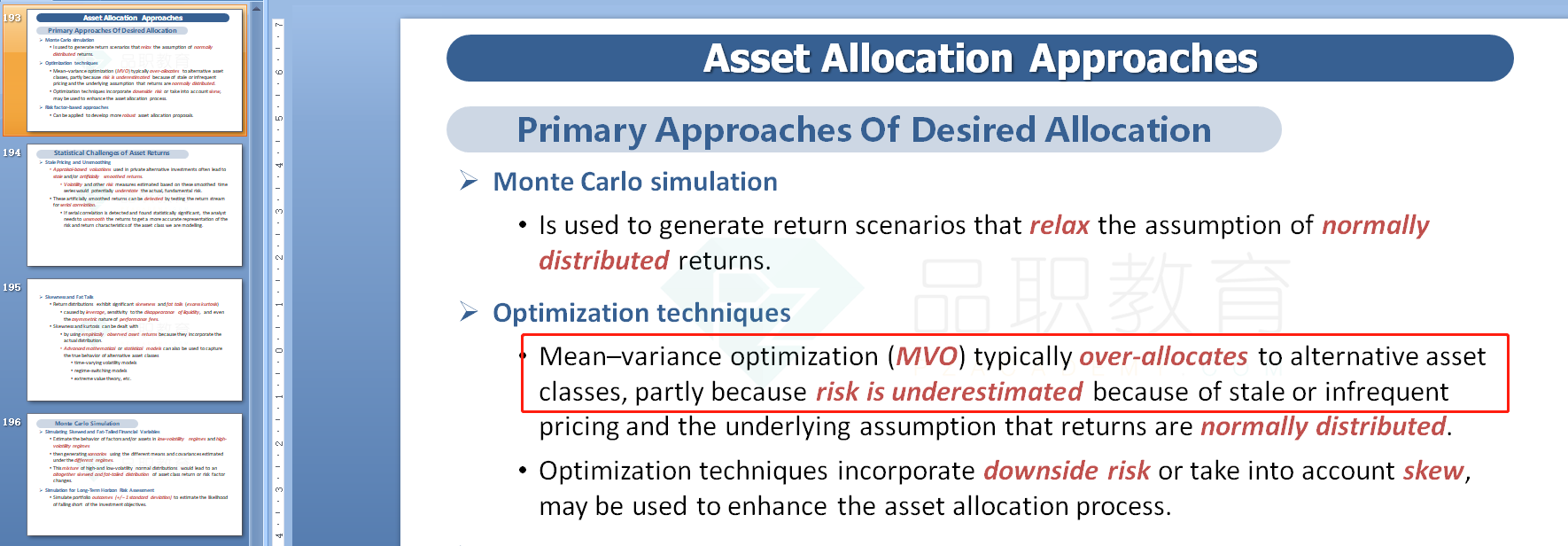NO.PZ2019122802000006
问题如下:
Which of the following statements about using a risk factor-based approach rather than a mean–variance-optimization technique is correct?
Statement 1 Risk factor-based approaches to asset allocation produce more robust asset allocation proposals.
Statement 2 A mean–variance optimization typically overallocates to the private alternative asset classes due to stale pricing.
选项:
A.Only Statement 1
Only Statement 2
Both Statement 1 and Statement 2
解释:
C is correct.
Statement 1 is correct because risk factor-based approaches to asset allocation can be applied to develop more robust asset allocations. Statement 2 is correct because a mean–variance optimization typically overallocates to the private alternative asset classes, partly because of underestimated risk due to stale pricing and the assumption that returns are normally distributed.
risk factor approach在配置资产组合时整体会更灵活。还是举个栗子,比如我想模拟一个创业板指数的走势,但是这些指数里面有些个股可能很难买到(比如因为交易不活跃)。那这个时候用risk factor approach来代替,做一个类似这些很难买到的指数里的个股的risk factor 。(例如这个买不到指数里的个股是小股票c,受小市值因子影响很大,就做多一个小市值股票同时做空一个大市值的股票,模拟出c股票的类似走势,即使没有买c股票,但是想要的结果达到了,用的risk factor approach模拟的结果涨跌和c股票都差不多)这样就相对更灵活一些,不用买不到这个指数的个股干着急。
stale pricing指的是报价不连续,导致价格更新的慢,样本少了,平滑了波动,所以方差小,而真实的波动会大很多,所以会低估风险,进而分配过多的资产在private alternative asset。

所以选C
感觉讲解是说 Risk-factor model更加灵活(这个我同意),但和Robust有啥关系啊?



